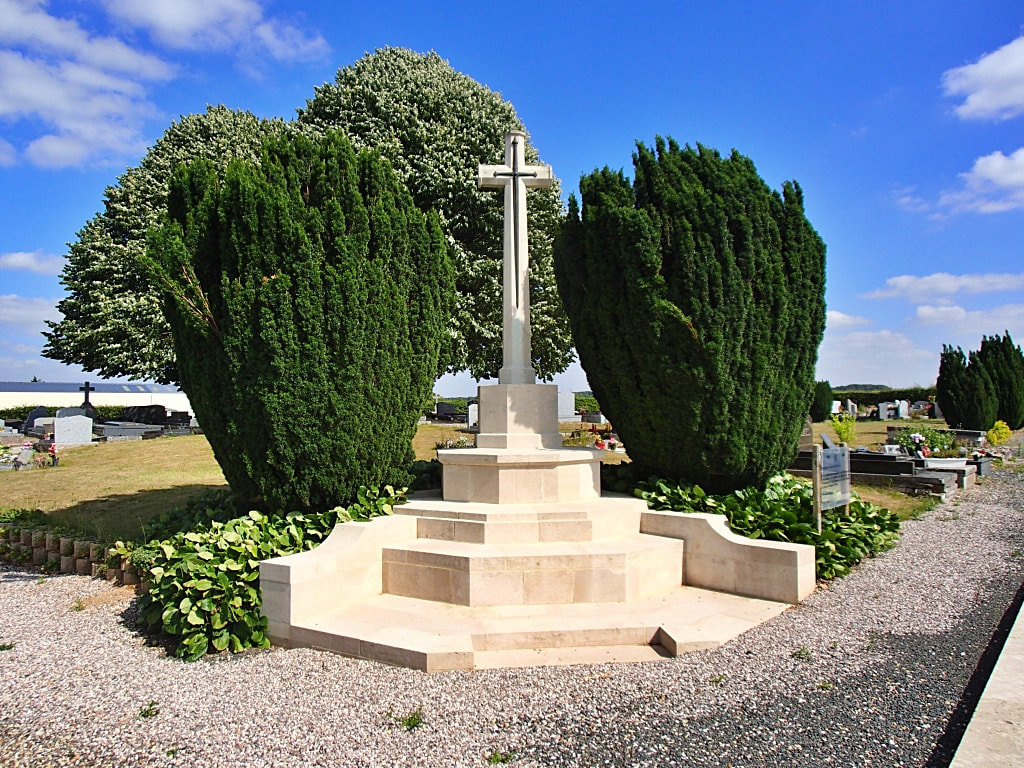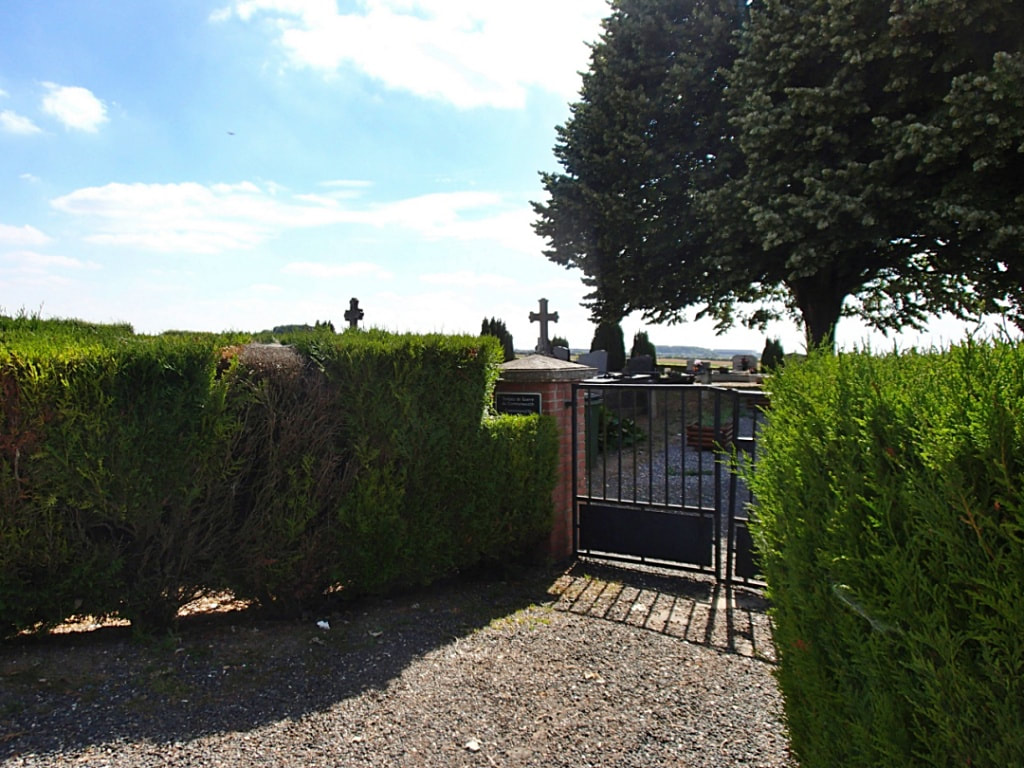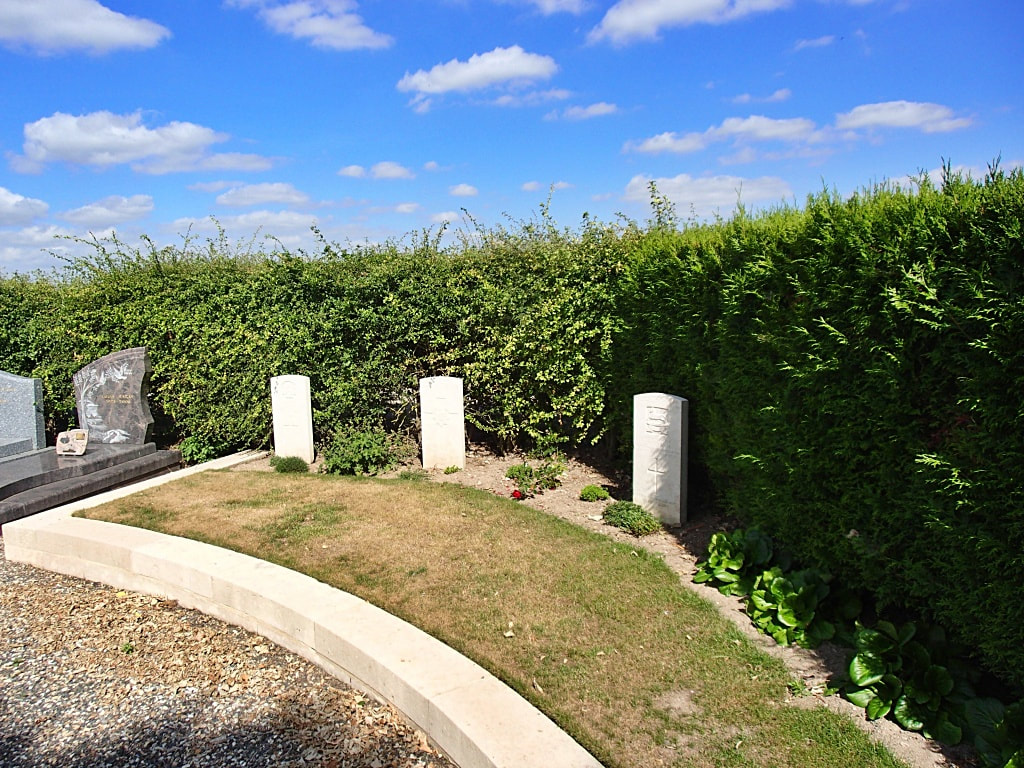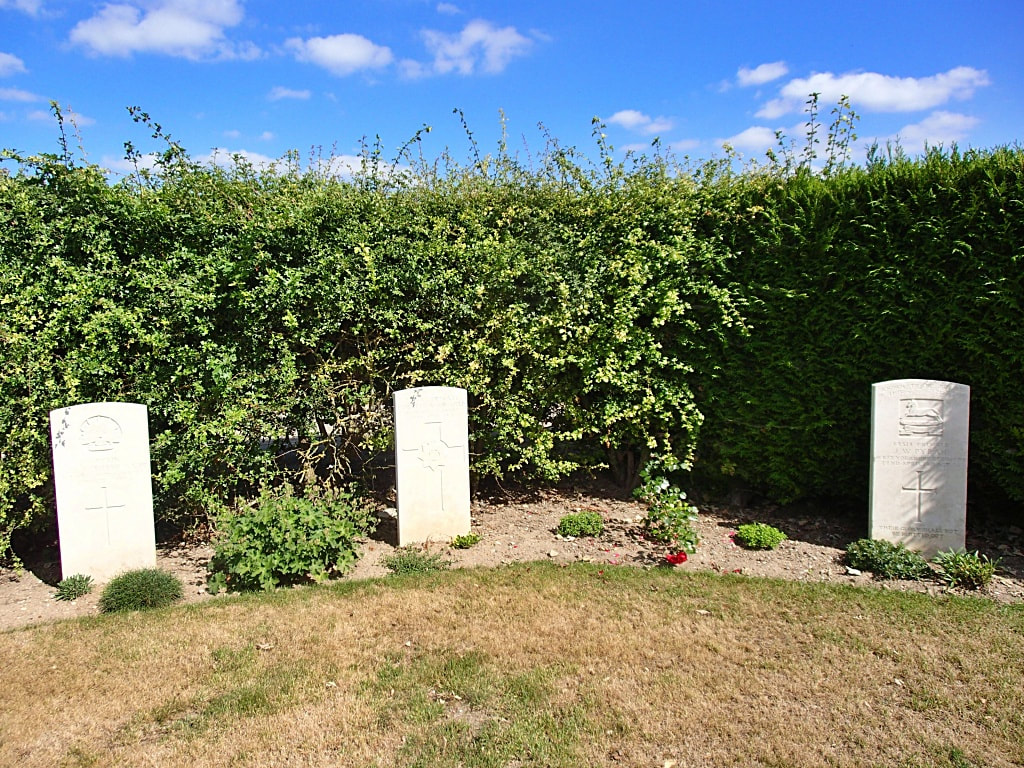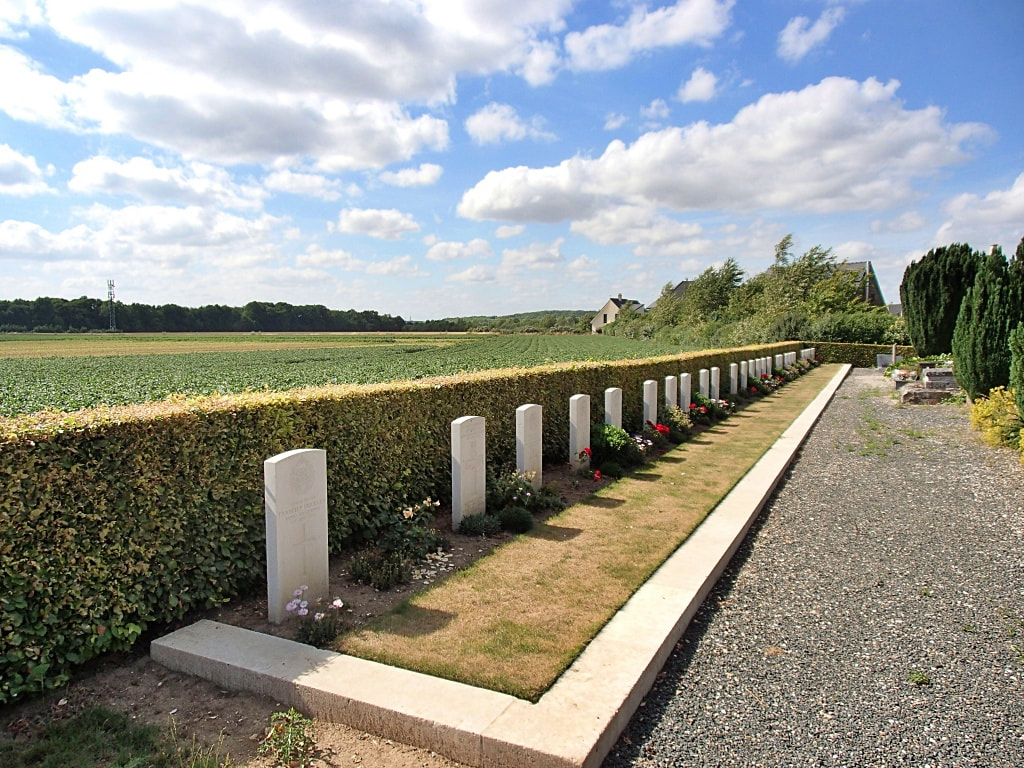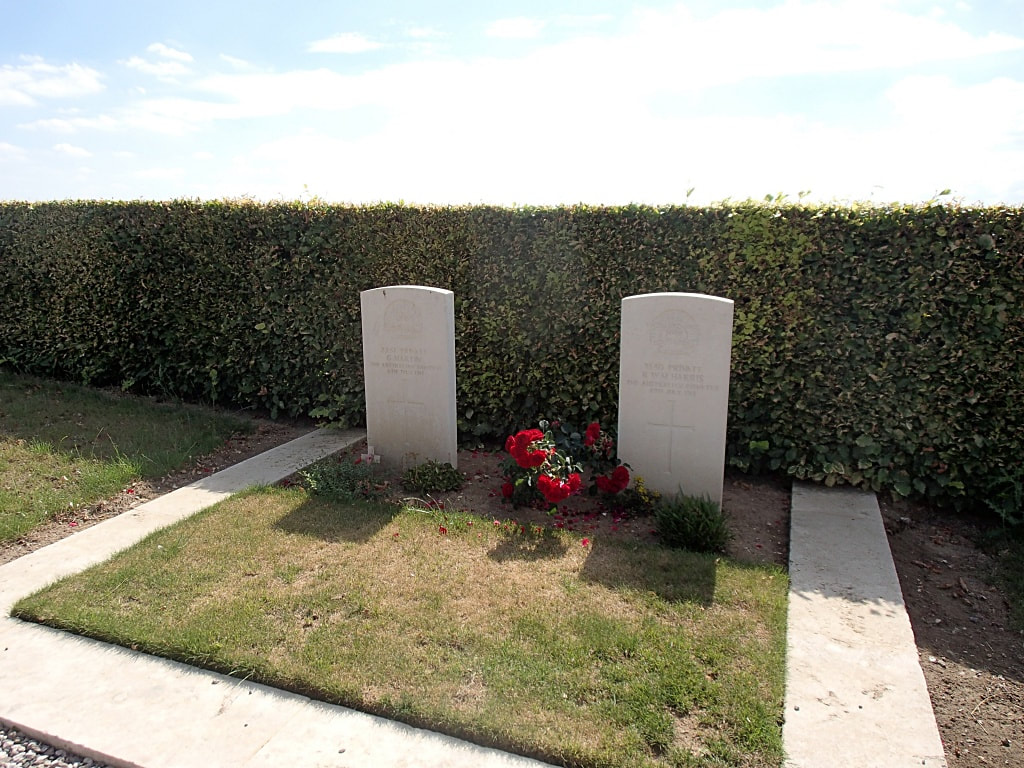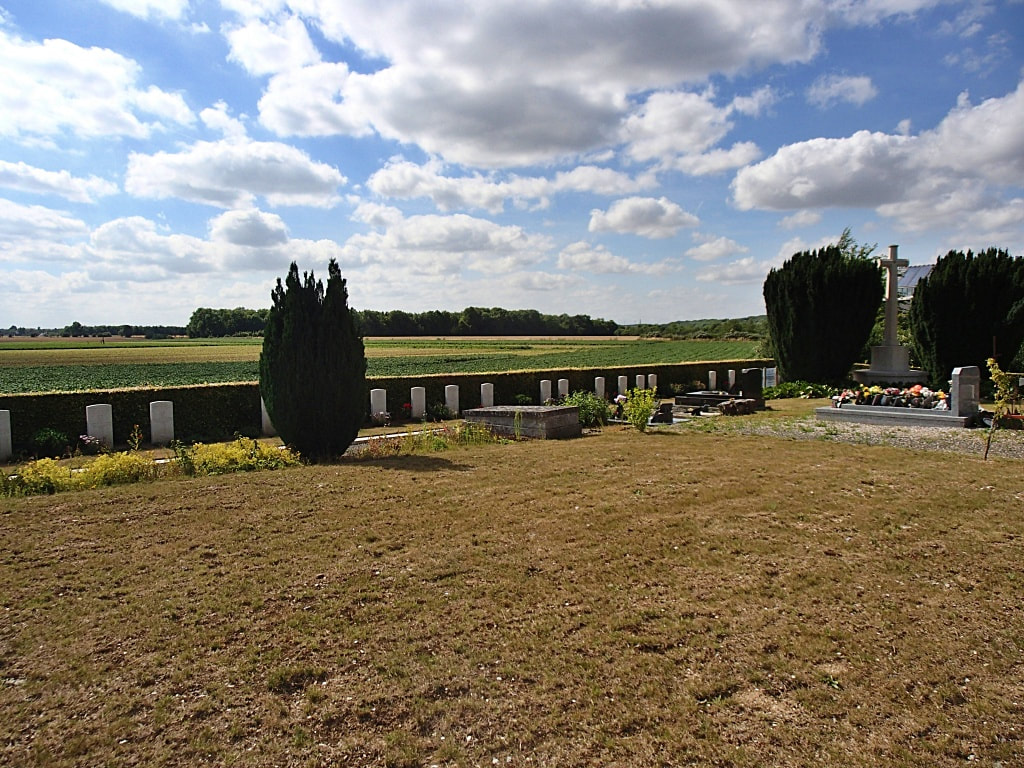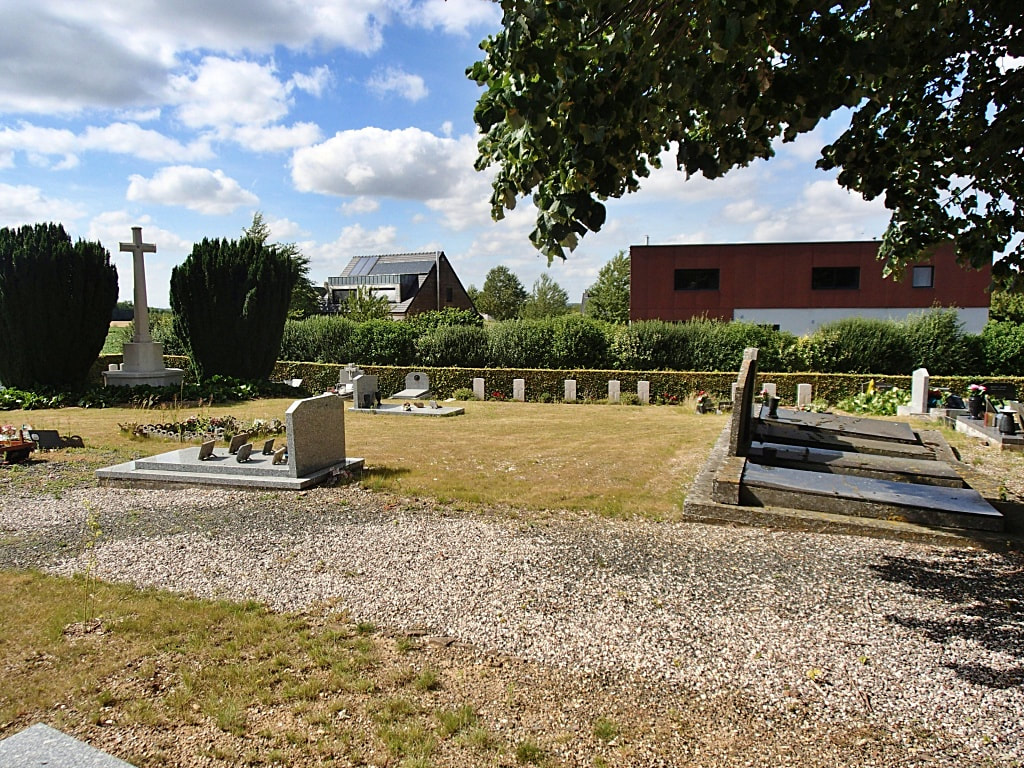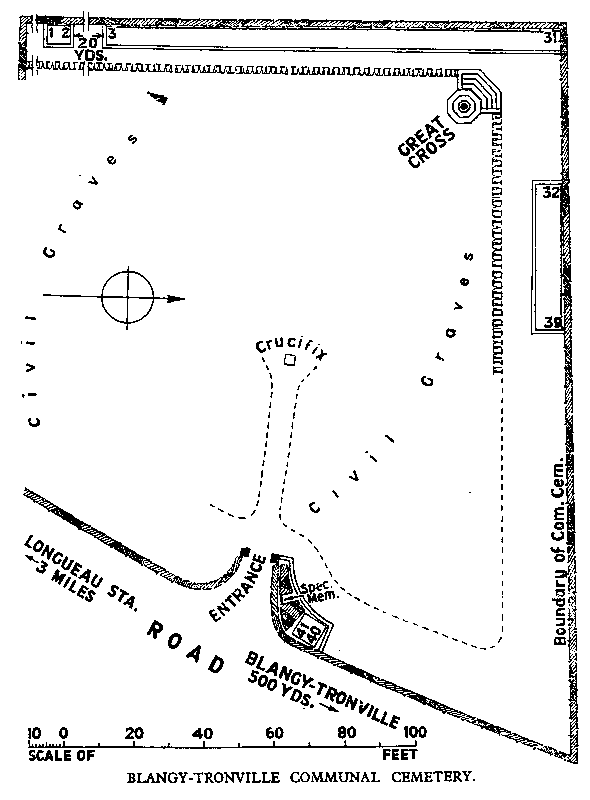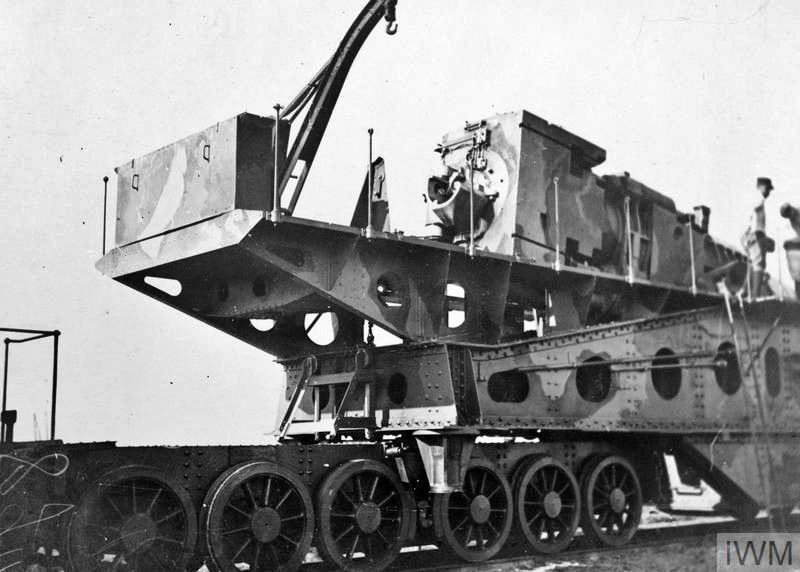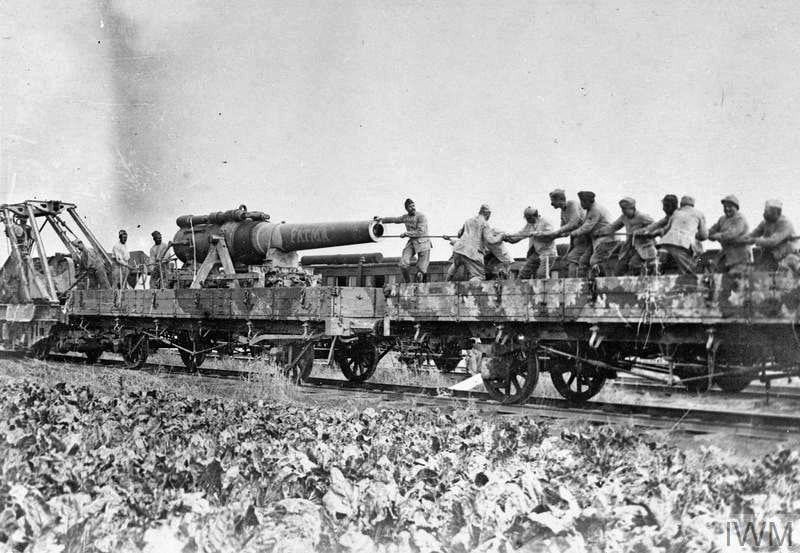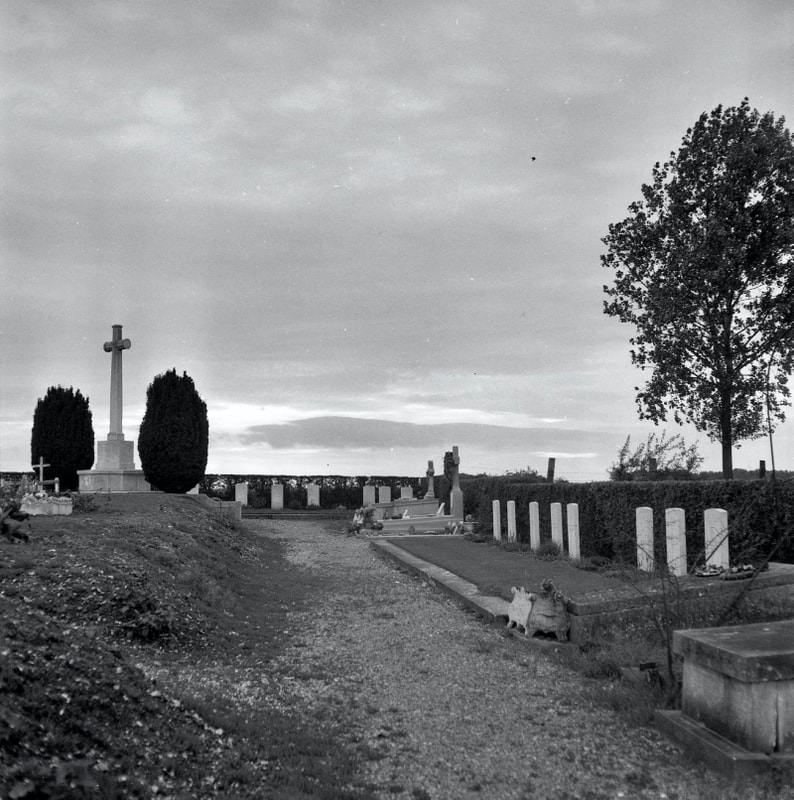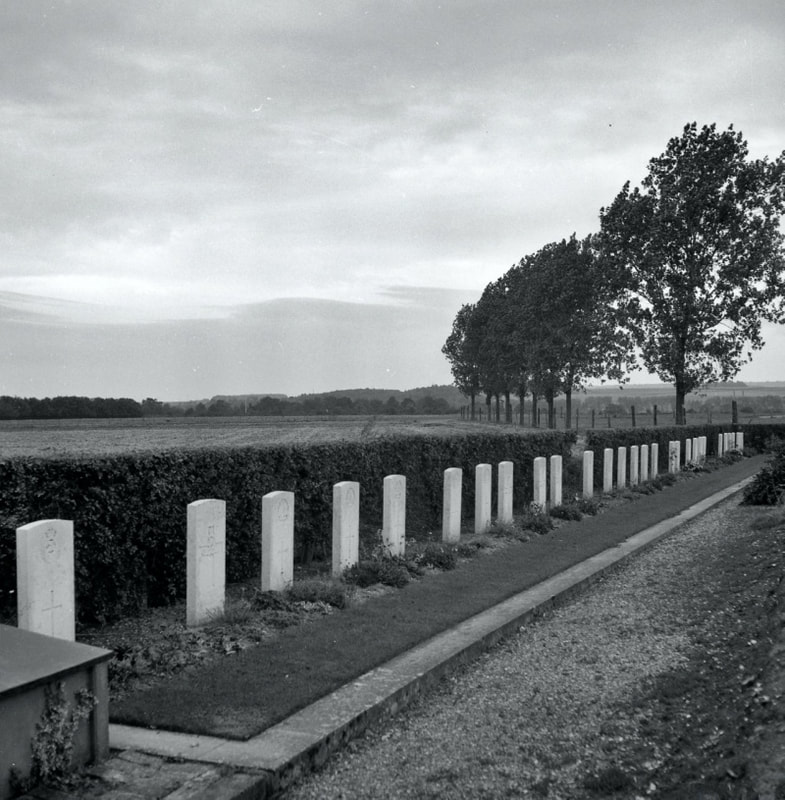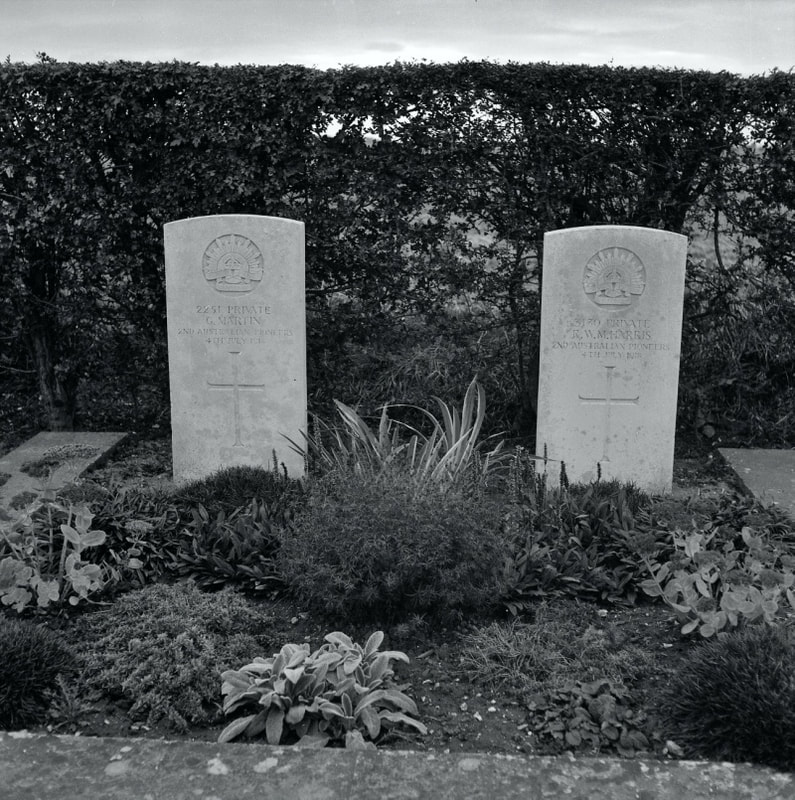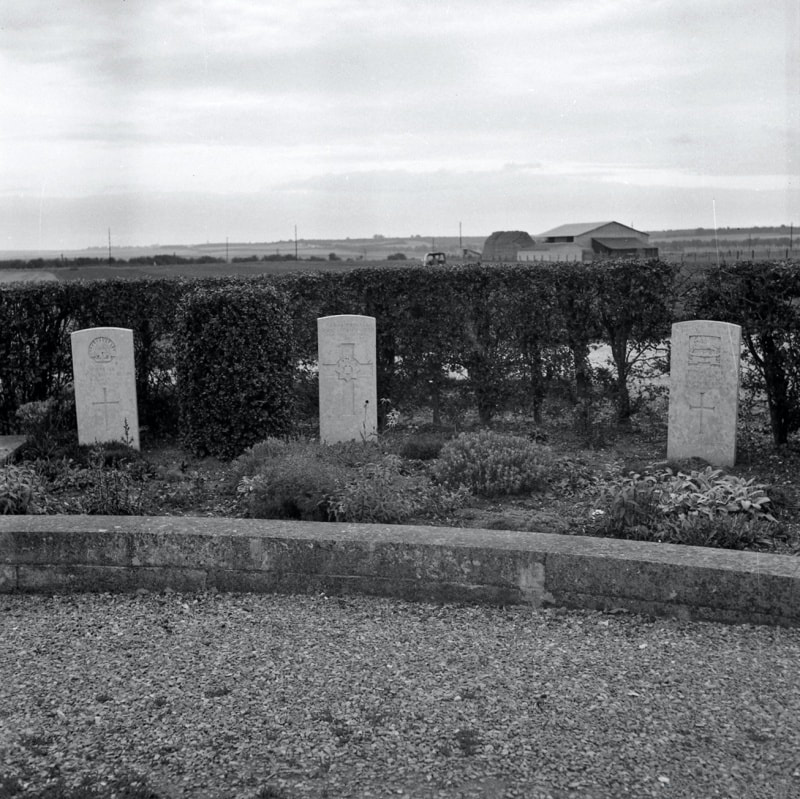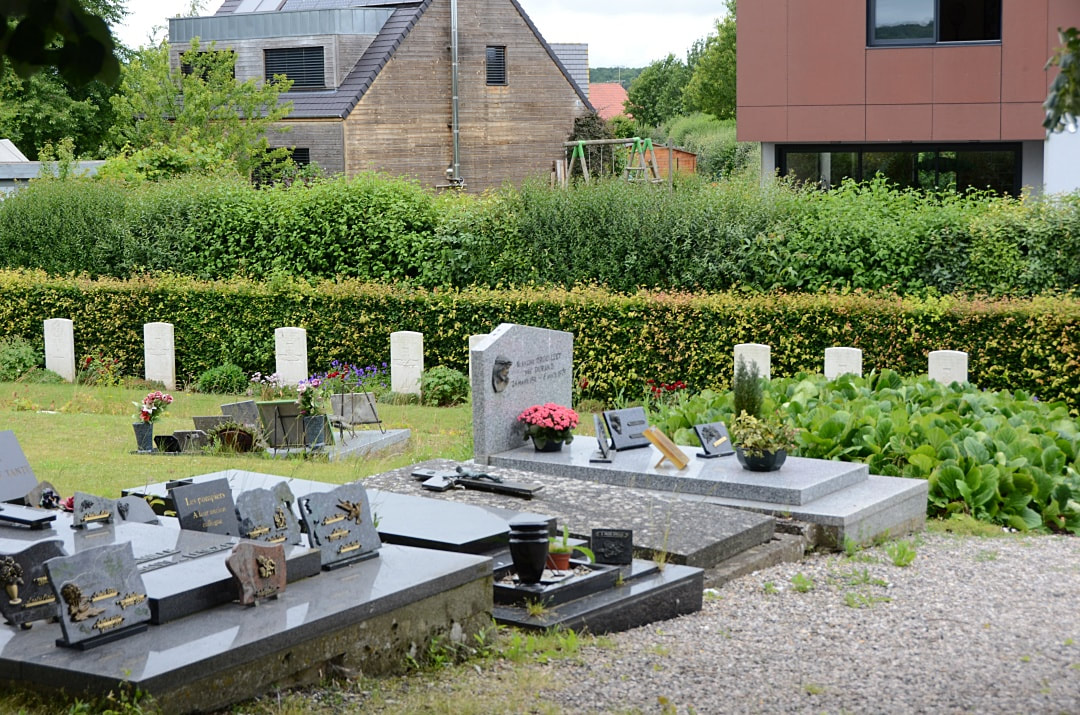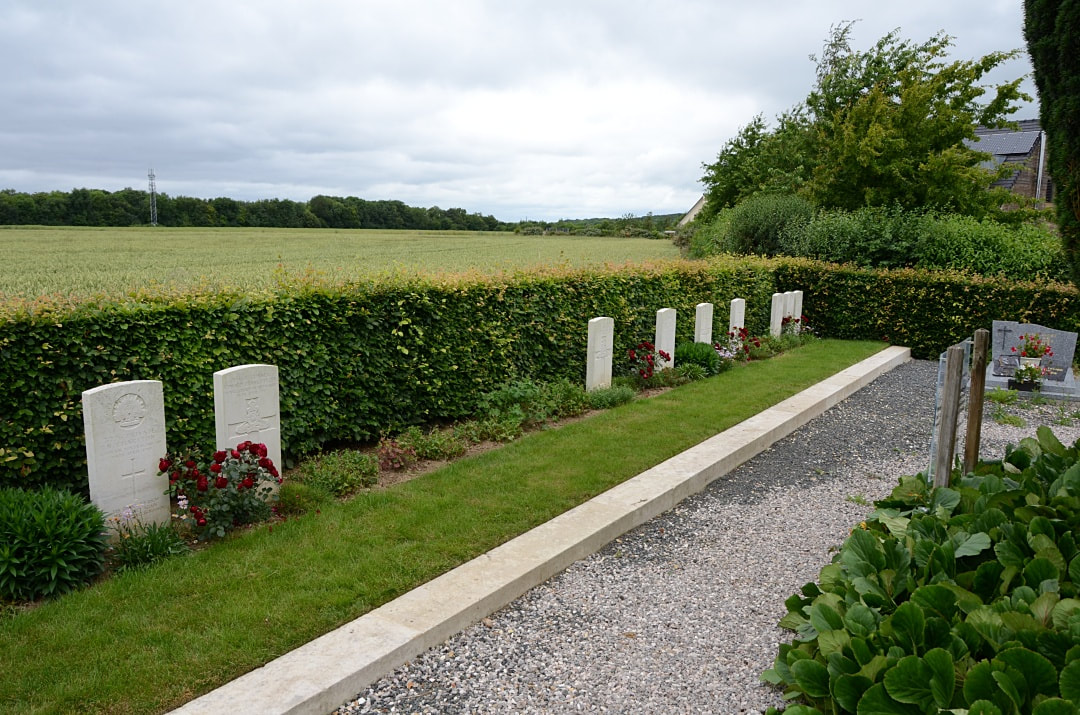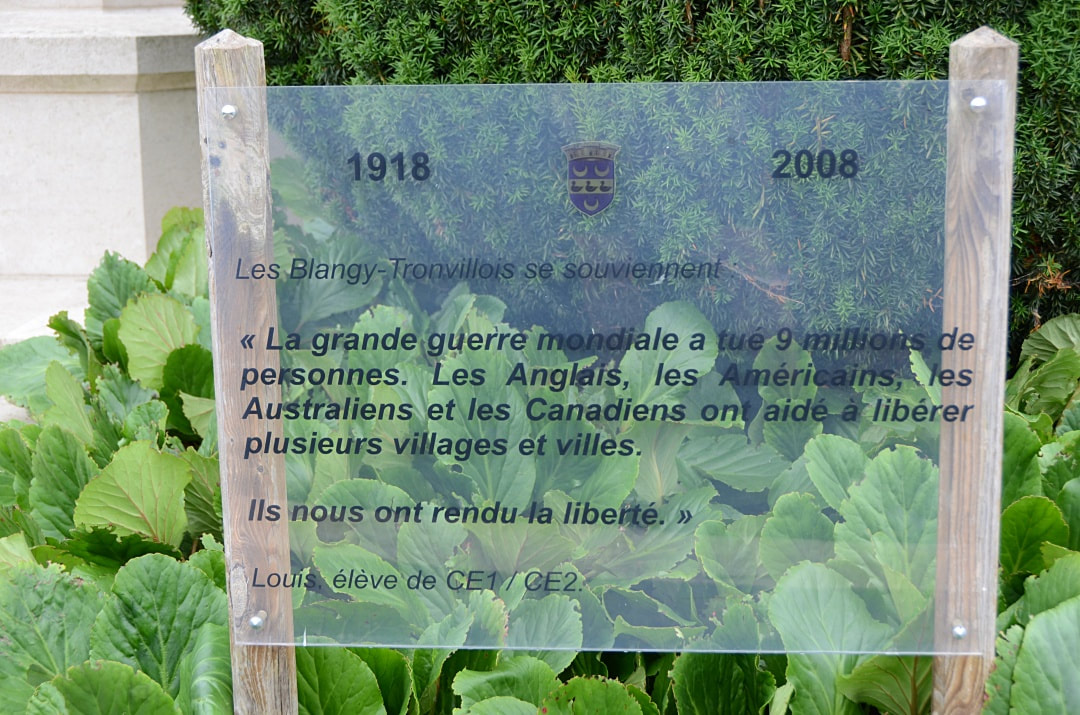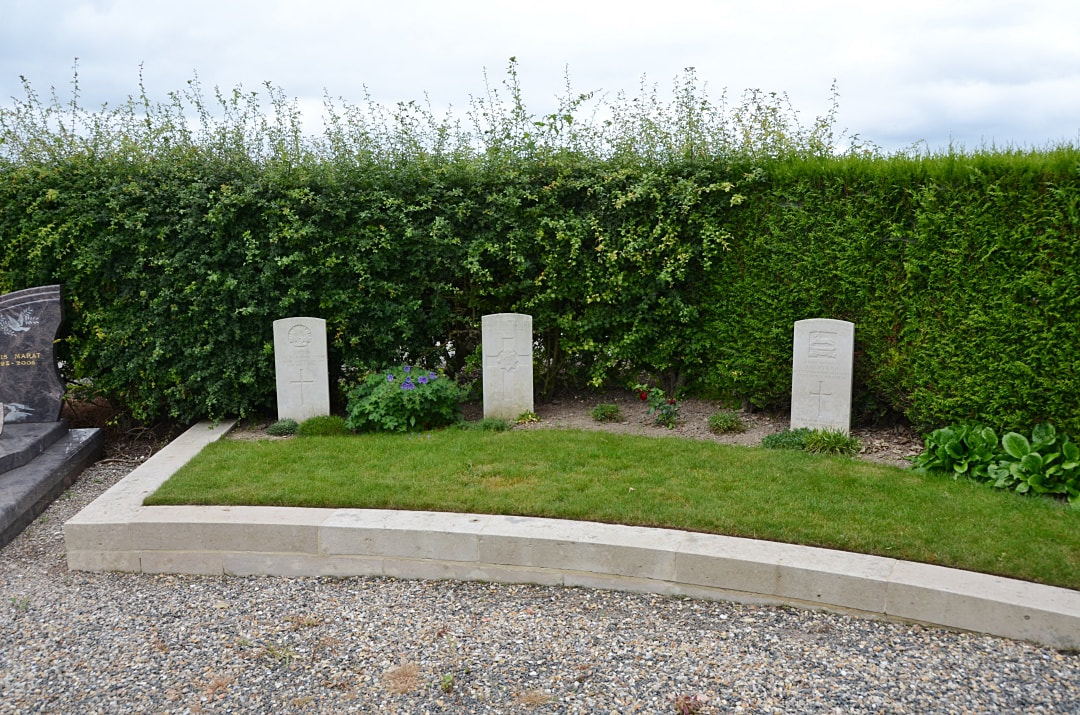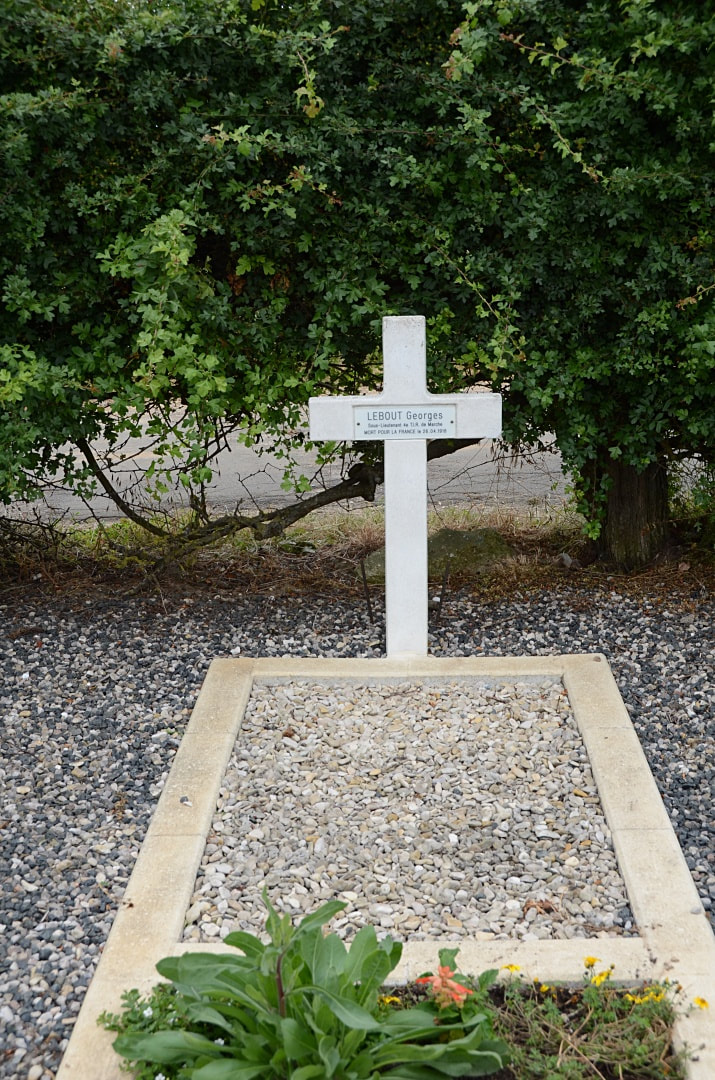BLANGY-TRONVILLE COMMUNAL CEMETERY
Somme
France
GPS Coordinates - Latitude: 49.87518, Longitude: 2.41961
Location Information
Blangy-Tronville is a village in the Department of the Somme, on the left bank of the River Somme, 10 kilometres east of Amiens.
From Amiens train station turn left onto the Rue Jules Barni in the direction of Longeau, then take the D1029 in the direction of St Quentin. Approximately 4 kilometres from Longeau train station, on the D1029, turn left in the direction of Blangy-Tronville. Cross over the railway once and then turn left and cross over again. The cemetery lies on the right hand side of the road and the CWGC Plots will be found to the left and rear of the cemetery.
The register is available in the Mairie on Monday; Tuesday; Thursday and Friday from 17.00 to 18.30
Historical Information
The communal cemetery was used, and extended, by Commonwealth and French troops in 1918, but the two extensions on the north side have since been removed.
The communal cemetery now contains 42 Commonwealth burials and commemorations of the First World War. One grave, destroyed by shell fire, is now represented by a special memorial.
The commonwealth plot was designed by William Harrison Cowlishaw
Total Burials: 43.
Commonwealth Casualties: United Kingdom 26, Australia 16.
Other Nationality: France 1.
Blangy-Tronville is a village in the Department of the Somme, on the left bank of the River Somme, 10 kilometres east of Amiens.
From Amiens train station turn left onto the Rue Jules Barni in the direction of Longeau, then take the D1029 in the direction of St Quentin. Approximately 4 kilometres from Longeau train station, on the D1029, turn left in the direction of Blangy-Tronville. Cross over the railway once and then turn left and cross over again. The cemetery lies on the right hand side of the road and the CWGC Plots will be found to the left and rear of the cemetery.
The register is available in the Mairie on Monday; Tuesday; Thursday and Friday from 17.00 to 18.30
Historical Information
The communal cemetery was used, and extended, by Commonwealth and French troops in 1918, but the two extensions on the north side have since been removed.
The communal cemetery now contains 42 Commonwealth burials and commemorations of the First World War. One grave, destroyed by shell fire, is now represented by a special memorial.
The commonwealth plot was designed by William Harrison Cowlishaw
Total Burials: 43.
Commonwealth Casualties: United Kingdom 26, Australia 16.
Other Nationality: France 1.
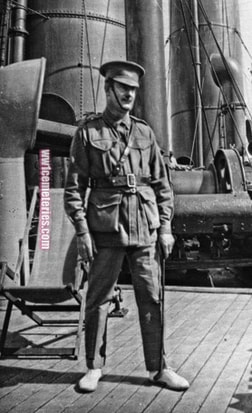
Captain
John Edward Wallace Bushelle
36th Bn. Australian Infantry, A. I. F.
6th April 1918, aged 25.
Grave 40.
Husband of Mrs Kathleen Dorothy Bushelle, Sydney, New South Wales
John Edward Wallace Bushelle
36th Bn. Australian Infantry, A. I. F.
6th April 1918, aged 25.
Grave 40.
Husband of Mrs Kathleen Dorothy Bushelle, Sydney, New South Wales

3276 Private
Norman Charlton
49th Bn. Australian Infantry, A.I.F.
24th April 1918, aged 22.
Grave 23.
Son of James and Edith L. A. Charlton, of Wellington Rd., East Brisbane, Queensland. Native of Brisbane, Queensland.
His headstone bears the inscription "Tis Sweet To Know We'll Meet Again Where Parting Is No More"
Norman Charlton
49th Bn. Australian Infantry, A.I.F.
24th April 1918, aged 22.
Grave 23.
Son of James and Edith L. A. Charlton, of Wellington Rd., East Brisbane, Queensland. Native of Brisbane, Queensland.
His headstone bears the inscription "Tis Sweet To Know We'll Meet Again Where Parting Is No More"
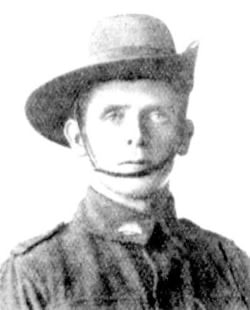
3130 Private
Robert William Matthews Harris
2nd Australian Pioneers
4th July 1918, aged 37.
Grave 2.
Husband of Mary Harris of East Perth, Western Australia.
Robert William Matthews Harris
2nd Australian Pioneers
4th July 1918, aged 37.
Grave 2.
Husband of Mary Harris of East Perth, Western Australia.

Second Lieutenant
Dudley Hugo Heynes
402nd Battery, Royal Field Artillery
16th May 1918, aged 32.
Grave 11.
Son of the Rev. George Hugo Heynes and Florence Mary Heynes (nee Gibson); husband of Helen Mary Heynes, of 83, Winter Rd., Southsea, Portsmouth. Born at Bolton, Lancs. Solicitor.
His headstone bears the inscription "A Good Soldier Of Jesus Christ 2 Tim. II.3"
Dudley Hugo Heynes
402nd Battery, Royal Field Artillery
16th May 1918, aged 32.
Grave 11.
Son of the Rev. George Hugo Heynes and Florence Mary Heynes (nee Gibson); husband of Helen Mary Heynes, of 83, Winter Rd., Southsea, Portsmouth. Born at Bolton, Lancs. Solicitor.
His headstone bears the inscription "A Good Soldier Of Jesus Christ 2 Tim. II.3"
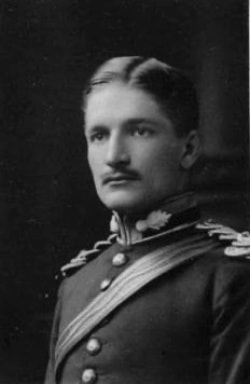
Major
Thomas Leonard Stanley Holbrow, M. C.
156th Field Company, Royal Engineers
28th March 1918, aged 28.
Grave 32.
Son of Stanley Charles and Katherine Yuille Holbrow, of Charing, Kent.
Thomas Leonard Stanley Holbrow, M. C.
156th Field Company, Royal Engineers
28th March 1918, aged 28.
Grave 32.
Son of Stanley Charles and Katherine Yuille Holbrow, of Charing, Kent.
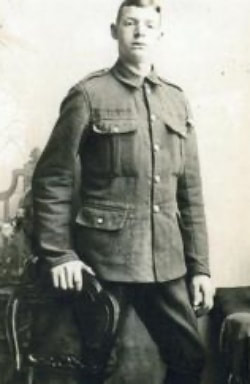
4426 Lance Bombardier
Alfred Houghton
"D" Battery, 86th Brigade, Royal Field Artillery
29th April 1918, aged 23.
Grave 19.
Son of Thomas and Sarah Houghton, of 75, Howley Lane, Warrington.
His headstone bears the inscription "Whatever Grief Or joy Be Ours We Always Think Of You Alfred"
Alfred Houghton
"D" Battery, 86th Brigade, Royal Field Artillery
29th April 1918, aged 23.
Grave 19.
Son of Thomas and Sarah Houghton, of 75, Howley Lane, Warrington.
His headstone bears the inscription "Whatever Grief Or joy Be Ours We Always Think Of You Alfred"

2251 Private
Gilbert Martin
2nd Australian Pioneers
4th July 1918.
Grave 1.
Gilbert Martin
2nd Australian Pioneers
4th July 1918.
Grave 1.

1606A Driver
Thomas Dunkley Price
43rd Bty. 11th Bde. Australian Field Artillery
2nd June 1918.
Grave 6.
Thomas Dunkley Price
43rd Bty. 11th Bde. Australian Field Artillery
2nd June 1918.
Grave 6.

3310 Private
Ivor Bevan Rhys
5th Australian Pioneers
17th April 1918, aged 21.
Grave 30.
Son of T. Tudor Rhys and Annie Rhys. Native of Ballarat, Victoria, Australia.
Ivor Bevan Rhys
5th Australian Pioneers
17th April 1918, aged 21.
Grave 30.
Son of T. Tudor Rhys and Annie Rhys. Native of Ballarat, Victoria, Australia.
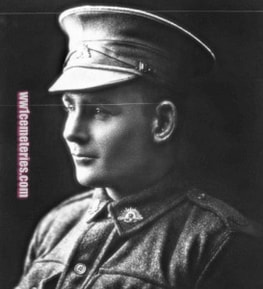
2731 Private
Arthur Clifford Stribling
50th Bn. Australian Infantry, A. I. F.
25th April 1918
Grave 22.
Son of Alfred G. and Jane M. Stribling, of Rutland Ave, Brighton, South Australia. Native of Tarlee, South Australia.
Arthur Clifford Stribling
50th Bn. Australian Infantry, A. I. F.
25th April 1918
Grave 22.
Son of Alfred G. and Jane M. Stribling, of Rutland Ave, Brighton, South Australia. Native of Tarlee, South Australia.
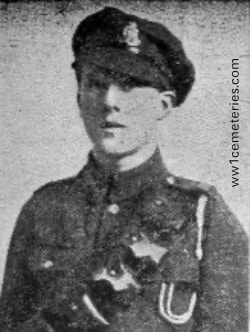
931060 Gunner
William Henry Ward
464th Battery, 179th Brigade, Royal Field Artillery
15th May 1918, aged 20.
Grave 14.
Son of William Henry and Emily Elizabeth Bligh Ward, of 36, Adelaide Rd., Chislehurst, Kent.
William Henry Ward
464th Battery, 179th Brigade, Royal Field Artillery
15th May 1918, aged 20.
Grave 14.
Son of William Henry and Emily Elizabeth Bligh Ward, of 36, Adelaide Rd., Chislehurst, Kent.
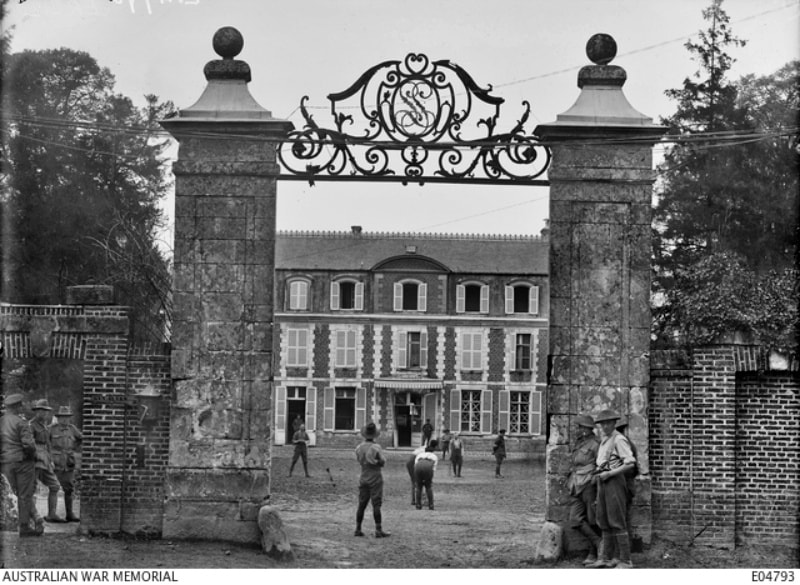
Blangy Tronville, France. 5 May 1918. Details of the 5th Division playing cricket in the grounds of the Chateau at Blangy Trouville. This Chateau was used as a Headquarters by the 15th Australian Infantry Brigade before and after the recapture of Villers-Bretonneux on 25 April. Note the shell case for gas alarm on the left of the main entrance gate.
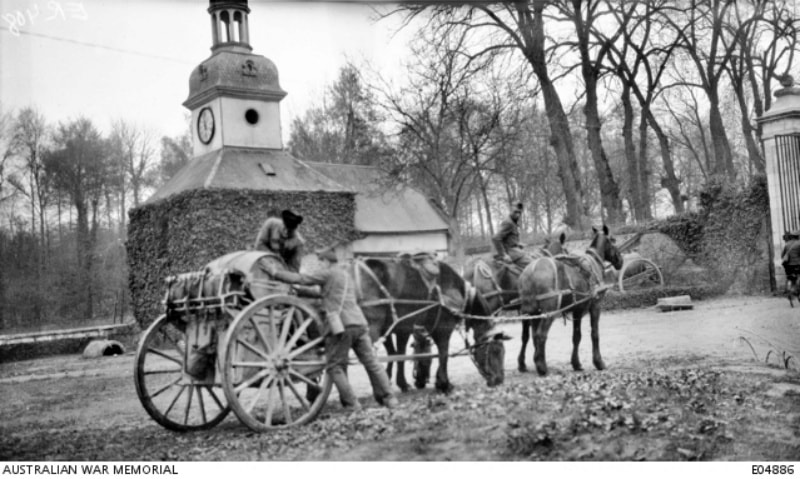
Near Blangy-Tronville, France. 29 April 1918. French Colonial soldiers with a French water wagon at the Chateau near Blangy-Tronville. The 13th Australian Infantry Brigade Headquarters moved to this Chateau from Querrieu Chateau on 24 April, when the Battalions of the Brigade moved forward to attack Villers-Bretonneux in company with the Battalions of the 15th Brigade, the headquarters of which was already establihsed at Tronville Chateau. The attack and consolidation by both Brigades was directed from this Chateau. The French Moroccan Division was holding the line on the right of the 13th Brigade on 29 April 1918 and their divisional artillery located near Glisy, used Tronville Chateau pump as a refilling point for their improvised water carts. The 13th Brigade Headquarters, after relief by the 12th Brigade on 30 May 1918, moved to Glisy Chateau. The building supporting the Clock Tower (seen in the background) was used by the 15th Brigade as a rations store and early in May 1918 a German high velocity shell struck the building just below the Clock tower. It demolished the clock and tower and wounded two of the soldiers occupying the building.

